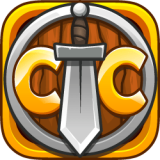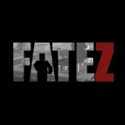Horror Movie Theme Songs soundboard, sounds, quotes, and clips. Amuse and entertain your friends!
App Features: Set sounds as ringtones, notifications, and alarms
Press and hold a sound for a popup that will allow you to set a sound as notification, alarm or ringtone.
This is an unofficial free fan app. Any content not owned by this developer belongs to their respective owners. If there is an issue with this app contact us via the email address and we will remove it.
The best Horror Movie Theme Song Sounds, Sound Effects, ringtones.
Please rate this app 5 stars! This free app is ad supported and may contain ads in the notification tray and/or home screen.
Top horror films themes like Halloween, Psycho, Nightmare on Elm Street, Friday the 13th, Jaws, Frankenstein, Freddy Kreuger, Texas Chainsaw Massacre, poltergeist, etc, carrie, scary movies, etc.
Horror is a film genre seeking to elicit a negative emotional reaction from viewers by playing on the audience's primal fears. fantasy, supernatural, monster, killing, spooky theme songs
Horror films often deal with the viewer's nightmares, hidden fears, revulsions and terror of the unknown. Plots within the horror genre often involve the intrusion of an evil force, event, or personage, commonly of supernatural origin, into the everyday world. Prevalent elements include ghosts, aliens, vampires, werewolves, curses, satanism, demons, gore, torture, vicious animals, monsters, zombies, cannibals, and serial killers.
The first depictions of supernatural events appear in several of the silent shorts created by the film pioneer Georges Méliès in the late 1890s, the best known being Le Manoir du diable, which is sometimes credited as being the first horror film. Another of his horror projects was 1898's La Caverne maudite (aka, The Cave of the Unholy One, literally "the accursed cave"). Japan made early forays into the horror genre with Bake Jizo and Shinin no Sosei, both made in 1898. In 1910, Edison Studios produced Frankenstein
The first monster appeared in a horror film: Quasimodo, the hunchback of Notre-Dame, who had appeared in Victor Hugo's novel, Notre-Dame de Paris (1831). Films featuring Quasimodo included Alice Guy's Esmeralda (1906), The Hunchback (1909), The Love of a Hunchback (1910) and Notre-Dame de Paris (1911).
German Expressionist film makers, during the Weimar Republic era and slightly earlier, would significantly influence later films, not only those in the horror genre. Paul Wegener's The Golem (1920) and Robert Wiene's The Cabinet of Dr. Caligari (also 1920) had a particular impact. The first vampire-themed movie was made during this time: F. W. Murnau's Nosferatu (1922), an unauthorized adaptation of Bram Stoker's Dracula.
Hollywood dramas used horror themes, including versions of The Hunchback of Notre Dame (1923) and The Monster (1925) both starring Lon Chaney, the first American horror movie star. Other films of the 1920s include Dr. Jekyll And Mr Hyde (1920), The Phantom Carriage (Sweden, 1920), The Lost World (1925), The Phantom Of The Opera (1925), Waxworks (Germany 1924), and Tod Browning's (lost) London After Midnight (1927) with Chaney.
During the early period of talking pictures, the American Movie studio Universal Pictures began a successful Gothic horror film series. Tod Browning's Dracula (1931), with Bela Lugosi, was quickly followed by James Whale's Frankenstein (also 1931). Some of these blended science fiction films with Gothic horror, such as The Invisible Man (1933) and, mirroring the earlier German films, featured a mad scientist. These films, while designed to thrill, also incorporated more serious elements. Frankenstein was the first in a series which lasted for many years, although Karloff only featured as the monster in Bride of Frankenstein (1935), again directed by Whale, and Son of Frankenstein (1939). The Mummy (1932) introduced Egyptology as a theme for the genre. Make-up artist Jack Pierce.


































